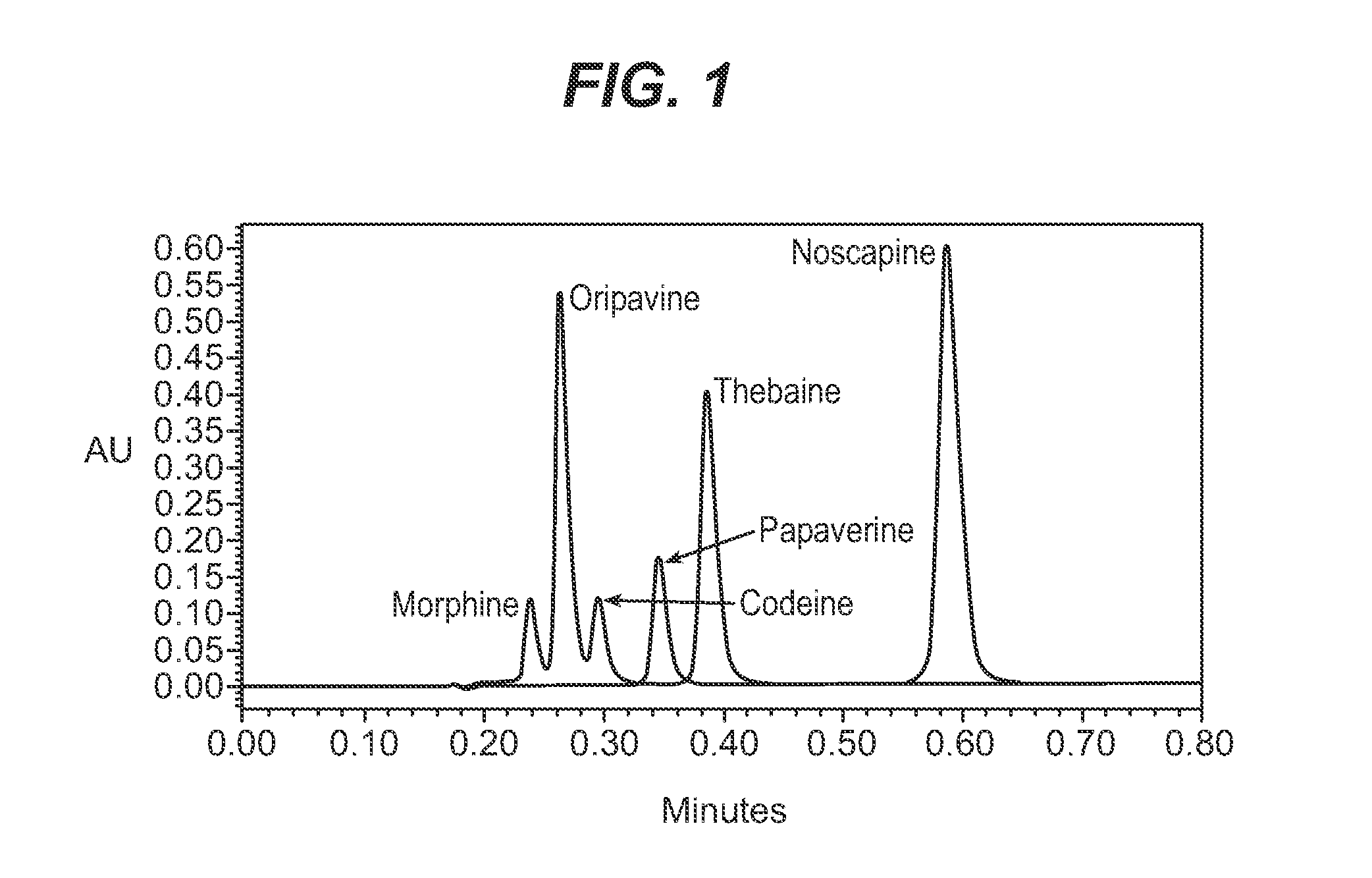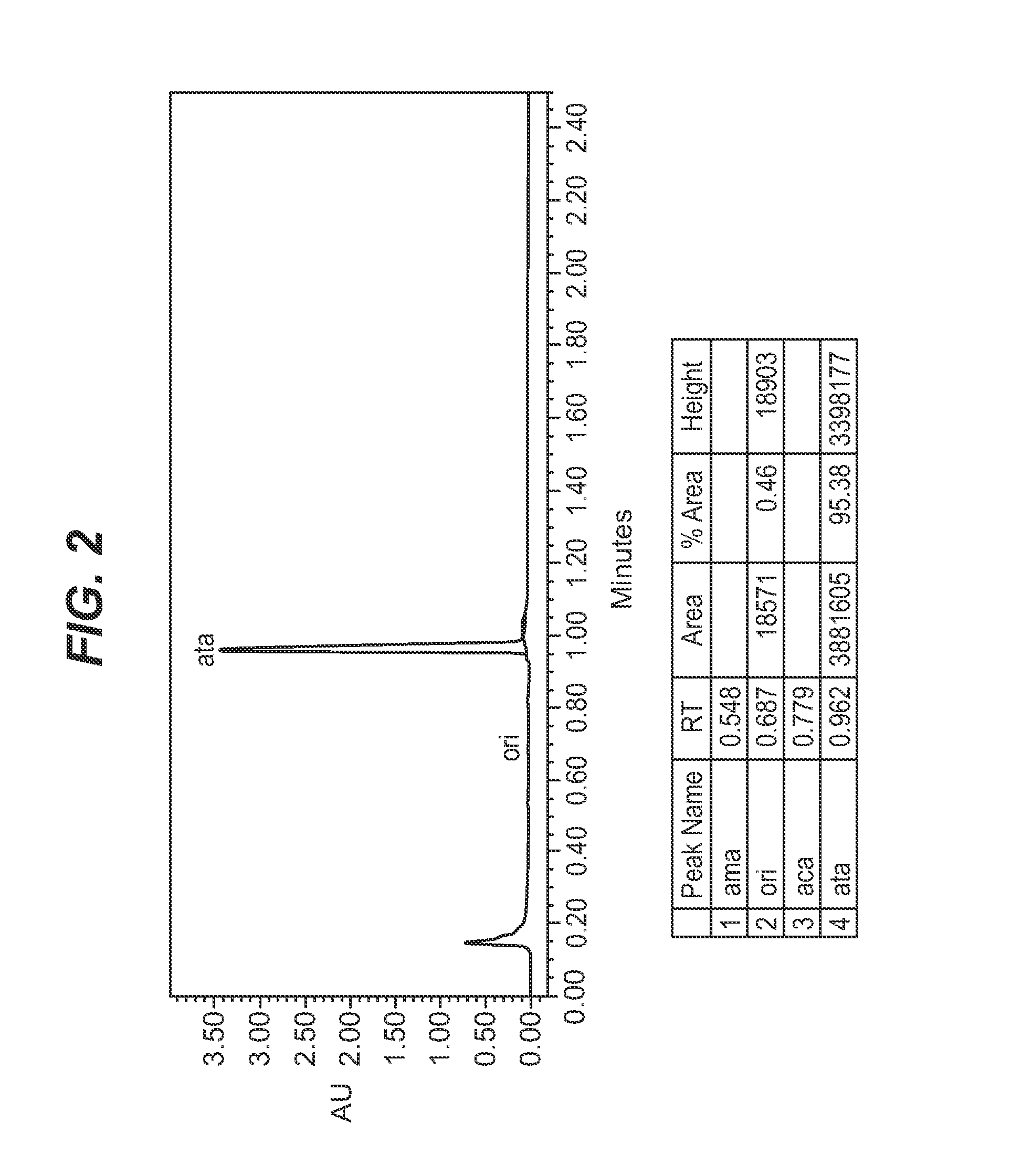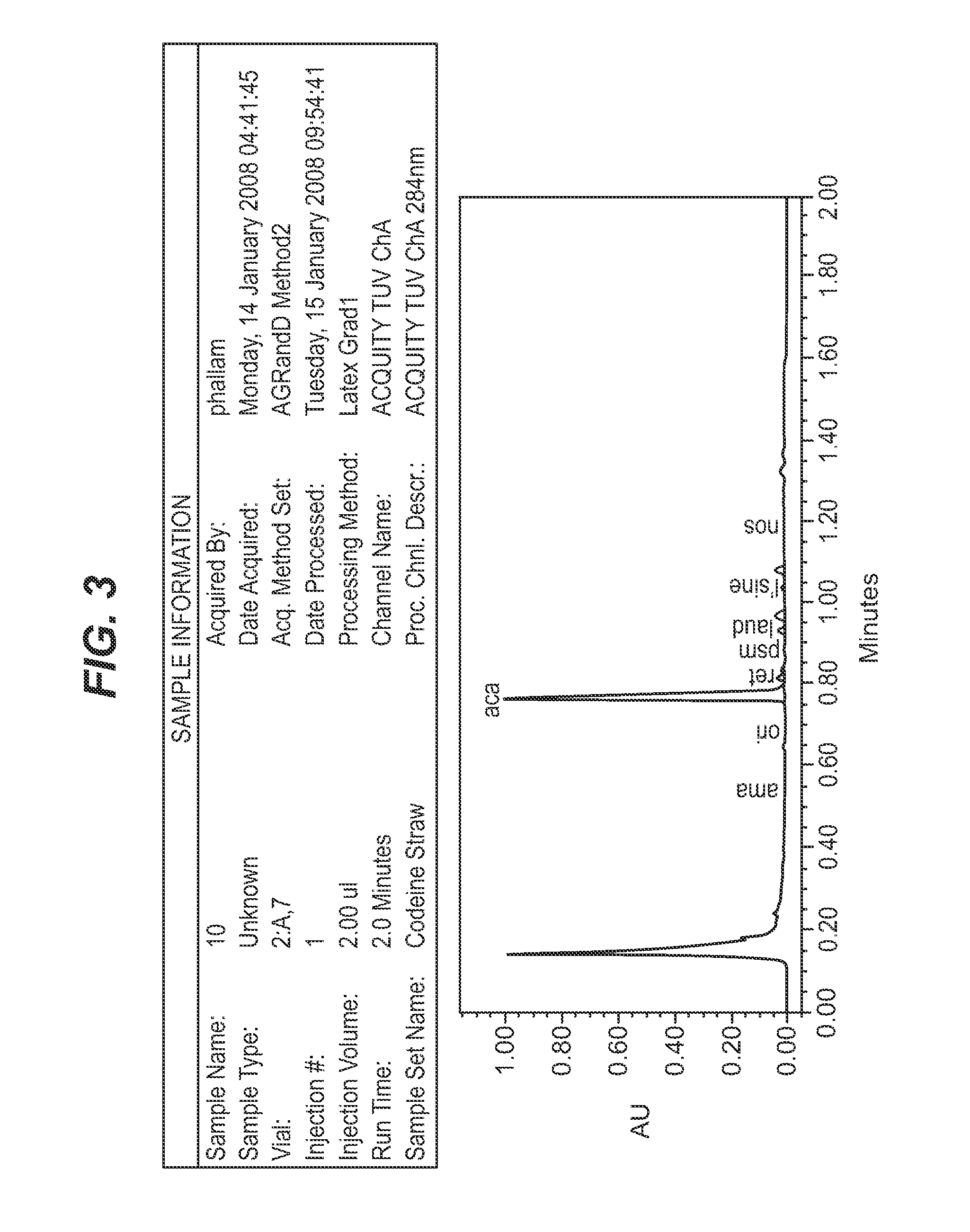Papaver somniferum with high concentration of codeine
a codeine and papaver technology, applied in the field of codeine production, can solve the problems of reducing the growth of morphine poppies, reducing the competition methylation, and potential for diversion and abuse, and achieve the effect of stably reproducing
- Summary
- Abstract
- Description
- Claims
- Application Information
AI Technical Summary
Benefits of technology
Problems solved by technology
Method used
Image
Examples
example 1
[0099]A selection of Papaver somniferum poppy, WF03-0802 is used as the starting material. This line contains the TOP1 mutation and therefore has the characteristics of containing thebaine and oripavine in its poppy straw and opium, and is substantially free of morphine and codeine. Seeds of WF03-0802 have been deposited under the Budapest Treaty with the American Type Culture Collection, 10801 University Boulevard, Manassas, Va. 20110-2209, on Mar. 20, 2007, under Accession No. ATCC PTA-9110, and will be made available upon the maturation of this application into a patent. The availability of these seeds is not to be construed as a license to practice this invention in contravention of rights granted under the authority of any government in accordance with its patent or breeder's rights laws.
[0100]Six seed samples each of 10 g were prepared. One sample was retained as a control. After obtaining the necessary inspections and permits, the 5 samples were sent to the Atom...
example 2
Latex Extraction
[0150]Latex Extraction Buffer: 23 g of ammonium dihydrogen phosphate was dissolved in approximately 750 mL deionised water and 200 mL of ethanol added, and made up to 1 L with deionised water.
Method
[0151]Isocratic Method:
[0152]A Pall AcroPrep™ 96 well, 0.2 μm GHP filter plate was placed on a 96 well, 350 μL collection plate. Both filter and collection plate were labeled and 280 μL of buffer pipetted into each well of the filter plate using a multipipette. Using forceps, a leaf tip approx 5 mm×5 mm was torn off from the plant to be tested and added to the extractant. The latex will bleed into the solution over time.
[0153]The sample was allowed to incubate at room temperature for at least 30 minutes. The sample was filtered using a vacuum manifold (Pall Corporation product No. 5017). The collection plate was covered with ABgene® adhesive PCR sealing foil (Cat #: AB-0626) to prevent evaporation. The collection plate can be stored in the refrigerator or freezer pe...
example 3
[0170]Part 1—Undertaking Crosses
[0171]Selections of Papaver somniferum poppy as described in Example 1, above, that accumulate thebaine as the predominant alkaloid and substantially no oripavine, codeine or morphine were used as the starting material. The selections used included the following:
[0172]FN1-900-3, FN1-900-5, FN1-900-7*, FN1-900-11*, FN1-900-12*, FN1-1242-2, FN1-1242-3, and FN1-1242-6*.
[0173]The selections marked * were extra M2 plants selected from a further planting of M2 seed, after these lines had been identified as giving rise to thebaine only plants. The complete list of high thebaine selections used is shown in Table 9 below.
[0174]The poppy lines listed above were used as male parents in crosses with three poppy lines that produce morphine as their predominant alkaloid. These lines were FW04-0183, PH01-0019 and WF03-1935. Seeds of poppy plants which produce morphine as their predominant alkaloid are widely available.
[0175]These plants were grown in po...
PUM
| Property | Measurement | Unit |
|---|---|---|
| temperatures | aaaaa | aaaaa |
| concentration | aaaaa | aaaaa |
| pH | aaaaa | aaaaa |
Abstract
Description
Claims
Application Information
 Login to View More
Login to View More - R&D
- Intellectual Property
- Life Sciences
- Materials
- Tech Scout
- Unparalleled Data Quality
- Higher Quality Content
- 60% Fewer Hallucinations
Browse by: Latest US Patents, China's latest patents, Technical Efficacy Thesaurus, Application Domain, Technology Topic, Popular Technical Reports.
© 2025 PatSnap. All rights reserved.Legal|Privacy policy|Modern Slavery Act Transparency Statement|Sitemap|About US| Contact US: help@patsnap.com



